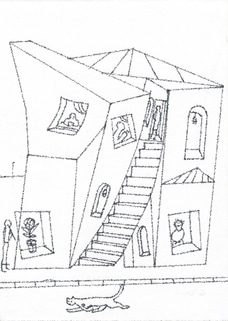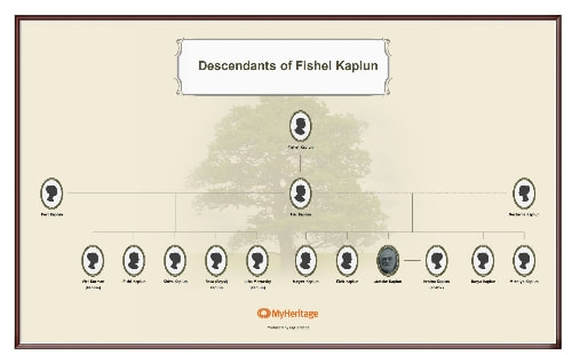Kaplun Family
|
"Kaplun" surname origin
In the Pale of Settlement, a law forcing all Jews to acquire family names was passed in 1804. The authorities in Jewish kahals (communities) were responsible for implementing the process. No regulations restricted the selection of surnames. However, in many examples Jewish authorities used special patterns to create names quickly.
Those who were descended from the priestly caste (kohanim) became Cohen, Kahn, and Katz (the latter an abbreviation for kohen tzedek, “priest of righteousness”)—or, in Slavic countries, where there was no “h” sound, Kogen, Kagan, and Kaplan (the last meaning “descended from priests”). Those of Levitic descent became Levy, Levin, Levinsky, Levitan, Levitt, Levitansky, and Segal (the latter an abbreviation for s’gan leviah:“member of the Levites”). One of the earliest modern records of Kaplan as a family name is that of Abraham Kaplan in 1698. Etymologically, the word “Kaplan”originates from the Latin term, capellanus or cappellanus, an office given to persons appointed to watch over the sacred cloak (cappa or capella) of St Martin of Tours. Its derivations were then found in many other European languages, including Yiddish, German, English, French, Polish, Norwegian, and Hungarian. According to Alexander Bieder surnames of Kohen or Levite origin in Russian Empire consist of just 1% of all Jewish surnames. “Jewish Surnames Adopted in Various Regions of the Russian Empire”, October 1, 2008. One of variation of surname “Kaplan” was surname “Kaplun”, origin of which was Ukraine. Yiddish was the “native” language for Jews in Ukraine. “Kaplun” is sounding more natural in Yiddish than “Kaplan”. In 19 century surname “Kaplun” was noticeable in Volhynia region, and it can be found in Berdichev, Mogilev, Rogachev, Buchov, Riga. In 2014 “Kaplun” surname distribution was as follow (©Forebears, 2012-16)
|
Note: a lot of KAPLUN families changed their surnames in USA to KAPLAN
|
Articles of Tsal ben Fishel Kaplun descendants: "Krasnostav" by Dina Kopylov "Krasnostav" by Peter Segal |




